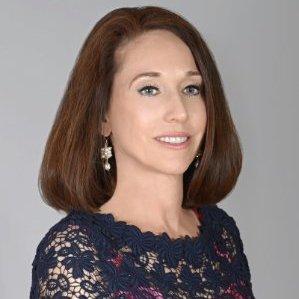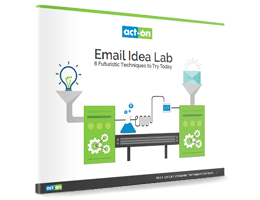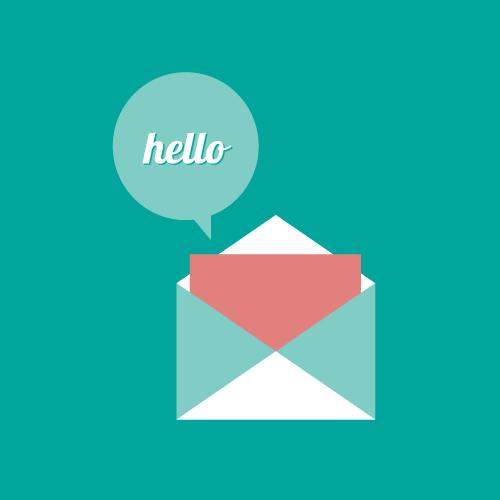Thought Leader Life is a web series spearheaded by Mitchell Levy, CEO and Thought Leader Architect at THiNKaha and Chief Aha Instigator at the Aha Amplifier, to spotlight today’s thought leaders. Recently Act-On Software’s Director of Digital Marketing, Linda West, and Rachel Rosin, Act-On’s Marketing Programs Manager, were guests on the program, talking about best practices in modern email marketing. Paula Chiocchi, founder and the B2B email marketing diva at Outward Media, guest hosted with Mitchell. This is Part 2 of an edited transcript of the conversation, if you missed part 1, you can read it here; you can catch the entire discussion here:
What technologies can be integrated to serve your strategy?

MITCHELL: What are some of the pieces of technology that you like? What do you like best? Give me a couple favorites that you like to integrate into what you guys do.
LINDA: Marketing automation, of course, is our backbone. It’s the command center.
MITCHELL: For those that are listening versus watching, there’s a nice little poster behind you both that’s very cool. It says Marketing automation for the real world – Act-On.”
LINDA: We also integrate video technology.
RACHEL: We use Oktopost for social posting and that helps a lot with reporting. It shows metrics – not just likes – but how does that translate into leads, and being able to track the leads that you may have on social through the funnel as well.
LINDA: We use a technology called Scratch-It as well, which is really cool. It’s an email tool. It’s basically a system that allows you to create a virtual scratch off ticket for your email. So you can use it for promotions to scratch and win. It’s really a cool piece of technology, so we’ve recently adopted that.
MITCHELL: I’ll have to try that one. That sounds great.
PAULA: I just found out about that myself this week. So you have already tested it?
RACHEL: It works well. It’s really cool. You transfer over to a landing page and you just use your mouse and you scratch it off. There’s some sort of offer underneath. We talk about people’s fear of missing out, the FOMO.

PAULA: Virtually everybody’s curious; I’d scratch it. [LAUGHTER]
Product promotion vs. thought leadership?
MITCHELL: We’re talking about Thought Leader Life here, and I’m curious about this: In your email messages and in your campaigns, what is the differentiation between content that focuses on the product versus content that focuses on the thought leader – either inside or outside of your company?
What do your buyers resonate with more? Do they want to see the product stuff or do they want to see thought leaders. Who is talking about how best to use the products that you’re talking about?
LINDA: The majority of the content that we produce and that gets really good engagement is content that’s about educating our audiences. It’s about best practices, what should I be thinking about, how do I approach this strategy? The product is really secondary to that. We’ll talk about the product in the final stages of a buyer’s journey, but really it’s about building trust with your audience. And that is more valuable than 10 product sheets. So we absolutely focus on thought leadership more than we do on product features and benefits. Thought leadership is really the benefit that the audience gets. It’s the why. So that’s where the money’s at.
RACHEL: At the end of the day, people want to figure out what your product is about. But they want to know how they can use it, how is it going to relate to what they do and what their job entails. So it’s really about focusing on providing the best practices for them.
MITCHELL: I love the conversation. And when we’re talking about thought leadership and you’re talking about sharing content, it really is because your buyer needs somebody to relate to. They don’t necessarily relate to a company or a product, they relate to a person who’s using it. It’s the why. It’s exactly what you mentioned.
LINDA: They’re people at the end of the day, just like I’m a person, Rachel’s a person, we’re all people, we have challenges, we don’t need products, we need a product because we have a challenge. So the challenge comes first. Tackle the challenge first, explain to them why the challenge exists, help them solve it, and then say okay this product is the solution on the back end of that. But that’s secondary.
The new face of marketing: The Team Trifecta
PAULA: Recent information I’ve seen is that the B2B buyer has done pretty much all the work online up to about 90 percent before they ever even contact sales to help them with the purchase. Is that what you guys see as well?
LINDA: That’s very true.
PAULA: That’s the point at which nurturing comes in.
LINDA: That’s exactly it.
RACHEL: And the way you use the Internet. If I’m looking for something, I go to the Internet first and try to find it. If the first link that I click on isn’t what I want, I go on to the second. And as buyers and as people with access to information, you control your journey. You can find what you want and try to answer your own questions so that you can become more educated on solving your own problems. Then you open it up to see suggestions on who can address the need.
PAULA: It’s a whole different ballgame than what it used to be.
LINDA: Yes.
PAULA: In fact I think read recently that in the next 20 years we’ll lose about a million B2B salespeople because everybody’s using the Internet.
LINDA: It’s funny because marketing has taken on that role to a certain extent. Marketing used to be a very fluffy profession. It used to be about creatives and branding and those types of things. But now it’s very technical. It’s very much about knowing your numbers and measurement and optimization and technology. So it’s interesting seeing it evolve. My career has been technology focused, but even five, 10 years ago, what I was doing was just very different. The things that I was focusing on were very different.
MITCHELL: What I find interesting in listening to you– and maybe you can describe it a little bit more in terms of how to be an effective marketer – is that you’re no longer this standalone entity, but rather, you have to integrate with the rest of the company to figure out how to best support a buyer’s journey. How do you do that? Can you talk a little bit about how you guys do that effectively?

LINDA: That’s key. Marketing is not something that can be done in a silo. There used to be this very clear separation. There’s marketing, and they do branding, and they do air cover, and they do ads. And then there’s sales, and they sell. Now marketing is responsible not only for managing the buyer’s journey from the time a customer first hears about a brand but through to the sale, which requires a lot of alignment with sales, agreement with sales. We work very closely with our sales team at Act-On, trying to understand where buyers are getting stuck in the funnel, and then creating nurture programs for those buyers.
Even beyond that, we work really closely with customer success. Because customer success is where you take a customer who’s just bought your product and expand that person into being a loyal repeat buyer who is going to be a promoter for you. This really requires marketing to lead the charge and be responsible for leading the customer experience throughout time. That’s across sales, across customer success. It’s like this trifecta of teams that need to come together. Marketing is the one who typically leads the charge on that because they’re the ones who understand the psychology of the buyer enough to really lead that journey. And they have the technology infrastructure behind them to enable it as well.
You used to have a lot of sales-led organizations, and now it’s evolving to a lot of marketing-led organizations. And so things have certainly shifted quite a bit.
MITCHELL: Well you sort of gave me this aha moment, because in the past the customer advocate who sat in the C-suite actually came from customer service. And even though they were given a C-suite title, they were the low person on the totem pole, they were not funded appropriately. But what you’re saying here is that a future advocate, not a customer, or an existing advocate, all need to be integrated., And that the overall customer experience, with them being a future advocate to be able to sell for you, that’s really important. It’s a new role for marketers. It’s an interesting aha moment. I have to spend more time thinking about that.
Paula, this is a big thing for you too. You have to think about bigger picture focus as well. That’s interesting.
PAULA: Very true.
LINDA: Yes.
MITCHELL: Wow. I love it. I absolutely love it. So the one thing I thought I’d mention on a tactical perspective, for those who have not run a lot of email marketing campaigns, is that whenever I’m doing an email campaign myself, I do a test drive -– I’ll send six or seven messages before we actually do the big blast. Paula, is that the same thing for you guys? I’ve seen what you and your team do, you’re running a number of tests just to make sure it works on multiple platforms. What do you guys see over at Act-On? What do you do to not only create your responsive emails, but how do you make sure they’re good before you send?

RACHEL: We have an A/B testing optimization tool, so it’s really easy. We take the technical guesswork out of it so you are able to do a head-to-head test for different elements in an email. It’s a very simple process. You just set it up within the system. What happens is about 20 percent of who you’re going to send to, 10 percent gets version A of your email, and the other 10 percent gets version B.
Whoever wins, that remaining 80 percent of your email goes to that top performing email. So you don’t have to rely on your gut feeling anymore of what you think is going to work. You can test it out to a smaller percentage of the audience and make sure that you are making the correct decisions.
LINDA: At an event, we did a joint survey, a mini-research report on a marketer’s ability to guess which emails would perform better. And lo and behold, marketers are horrible at guessing which emails are going to actually perform better. It’s great to be able to say for sure, this orange button is going to be better than green button. And I know this because I see it in the numbers.
MITCHELL: Sort of like picking stocks.
[LAUGHTER]
LINDA: I still haven’t gotten that one yet, so…
PAULA: I don’t think any of us have, really. Except Warren Buffet.
MITCHELL: Oh yeah, he’s done an amazing job. This was a phenomenal session. Paula, based on the conversation and what’s happened, is there something you want to add in terms of something we didn’t ask or something that makes sense to share at the end?
PAULA: I think we covered pretty good ground.
LINDA: I think we covered quite a bit. But I would add one more thing, which is that email as discipline is half art and half science. So if you are an email marketer or if you engage in emails, do not be afraid to go and experiment and try and be creative and use both sides of your awesome marketing brain.
RACHEL: I second that.
PAULA: Well said.
MITCHELL: Yeah, that was really nice. It’s a nice aha moment. I’ll take a third on that.
Again, if you missed Modern Email: Still Winning Friends and Influencing People: Part 1, you can find it here.
Emails don’t have to be bland, stale or boring, but most email marketers are only scratching the surface of possibilities. Get ready to try something new with Act-On’s eBook – Email Idea Lab: 6 Futuristic Techniques to Try Today.
